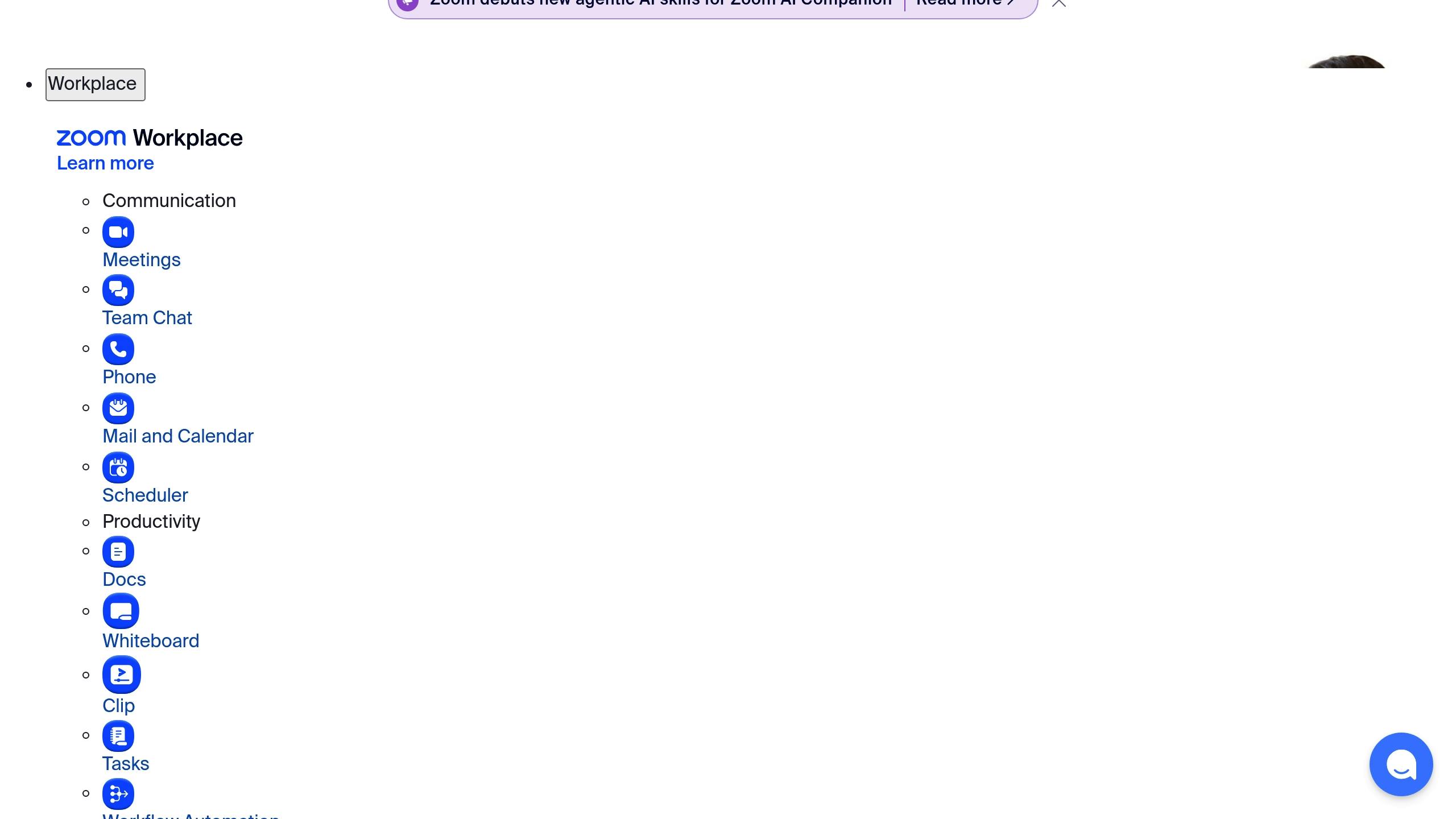Looking to connect with your team this holiday season? Christmas trivia is a fun, easy way to break the ice, spark conversations, and share laughs. This article provides 15 engaging trivia questions covering holiday movies, songs, and traditions – perfect for virtual or in-person team activities. Here’s a quick preview of what you’ll find:
- Movies: Who raised Buddy in Elf? (Answer: Papa Elf)
- Songs: What was Jingle Bells originally called? (Answer: One Horse Open Sleigh)
- Traditions: Where did Christmas trees start? (Answer: Germany)
Make it a game: Use these questions to create a fun trivia session with your team. Add prizes like gift cards or extra PTO to boost engagement. Whether it’s a quick activity or a full event, this trivia is a simple way to spread holiday cheer and strengthen team bonds.
CHRISTMAS VIRTUAL GAMES | ZOOM Holiday Games

1. Who is the main character in ‘Home Alone’?
Answer: Kevin McCallister
2. What does Ralphie want for Christmas in ‘A Christmas Story’?
Answer: An Official Red Ryder Carbine-Action 200-Shot Range Model Air Rifle
In the 1983 holiday classic, 9-year-old Ralphie Parker dreams of getting a Red Ryder BB gun for Christmas. He repeatedly mentions the gift’s full name: "An Official Red Ryder Carbine-Action 200-Shot Range Model Air Rifle." However, every adult he encounters warns him with the same line: "You’ll shoot your eye out!" This heartfelt and humorous quest for the BB gun has become one of the most unforgettable parts of the movie.
3. Who raises Buddy in ‘Elf’?
Answer: Papa Elf
In the 2003 Christmas movie Elf, Buddy is raised by Papa Elf at the North Pole. This heartwarming relationship plays a key role in the story and adds to the movie’s appeal.
4. What is the first Christmas gift in The Polar Express?
Answer: A silver bell from Santa’s sleigh
In The Polar Express, Santa gifts the young boy a silver sleigh bell that only rings for those who truly believe. This bell represents the boy’s shift from skepticism to faith, as it chimes exclusively for those who hold onto the magic of Christmas.
This question often leads to discussions about holiday traditions and beliefs, making it a great way to start a festive conversation.
5. Who is the angel in "It’s a Wonderful Life"?
Answer: Clarence Odbody
In the 1946 holiday classic "It’s a Wonderful Life," Clarence Odbody, played by Henry Travers, is the Angel Second Class sent to guide George Bailey (James Stewart). His mission? To help George see the value of his life. Clarence’s journey to earn his wings is central to the story, and his memorable line, "Every time a bell rings, an angel gets his wings," has become a timeless symbol of hope and redemption during the holiday season.
6. Who sings "All I Want for Christmas Is You"?
Answer: Mariah Carey
Mariah Carey is the voice behind the holiday favorite "All I Want for Christmas Is You." The song’s cheerful tune makes it a great addition to virtual trivia games. You could even play a short snippet of the intro as a fun clue.
7. What was ‘Jingle Bells’ first called?
Answer: One Horse Open Sleigh
The holiday classic ‘Jingle Bells’ originally had a different title. When it was copyrighted on September 16, 1857, it was called "One Horse Open Sleigh."
This little-known detail can be a fun conversation starter about well-loved holiday songs. If you’d like to drop a hint, just mention the lyric "in a one-horse open sleigh."
8. Who composed "White Christmas"?
Answer: Irving Berlin
Irving Berlin wrote "White Christmas" in 1940. Bing Crosby first performed it on NBC’s "The Kraft Music Hall" during the Christmas Day broadcast on December 25, 1941. The song went on to become one of the most iconic holiday classics of all time.
sbb-itb-df5c804
9. Name a reindeer from "Rudolph the Red-Nosed Reindeer"
Answer: Dasher
The classic 1964 Rankin/Bass special "Rudolph the Red-Nosed Reindeer" features Santa’s iconic team: Dasher, Dancer, Prancer, Vixen, Comet, Cupid, Donner, and Blitzen. Mentioning any of these names is sure to bring up holiday cheer.
10. What is ‘Stille Nacht’ in English?
Answer: Silent Night. In German, Stille translates to "silent", and Nacht means "night."
11. Which country started Christmas trees?
Switching gears to holiday traditions:
Answer: Germany. In the 16th century, German Protestant Christians began the custom of decorating Christmas trees. These early trees featured apples, nuts, paper roses, candles (eventually replaced by electric lights), and handmade ornaments.
The tradition became more widespread when Prince Albert, Queen Victoria’s German husband, introduced it to the English court in 1840. An illustration of the royal family gathered around a decorated tree helped popularize the custom across England and later in the United States.
This bit of trivia often leads to fun conversations about how holiday traditions travel and gives people a chance to share their own tree-decorating stories.
12. Where did Santa Claus come from?
Answer: Santa Claus originated from Saint Nicholas, a 4th-century Greek bishop known for his generosity and kindness.
The modern image of Santa began to take shape with Clement Clarke Moore’s 1823 poem, "A Visit from St. Nicholas", which introduced the idea of a jolly figure with a round belly and a sleigh pulled by reindeer. Later, Haddon Sundblom’s Coca-Cola advertisements solidified Santa’s familiar look: a cheerful man in a red suit with a white beard.
This transformation shows how cultural figures can evolve over time, blending history and tradition into what we recognize today.
13. What’s the story behind mistletoe kisses?
Answer: The exact origins of mistletoe kisses are a bit mysterious, but the plant has long been associated with love, fertility, and goodwill. Some trace the tradition back to ancient myths with Norse roots, while it gained popularity as a playful custom during the Victorian era. Back then, kissing under the mistletoe became a way to share affection and spread holiday cheer.
Mistletoe itself is a parasitic plant that grows on tree branches, but its symbolism has evolved over time. Today, it adds a romantic and fun touch to Christmas celebrations, keeping this charming tradition alive.
14. Why do we hang Christmas stockings?
Answer: The tradition of hanging Christmas stockings comes from the story of Saint Nicholas. Known for his secret acts of kindness, he would leave gifts for those in need. Over time, this evolved into the beloved practice of filling stockings with small presents on Christmas Eve.
15. What do Advent wreath candles mean?
Answer: An Advent wreath features four candles, each symbolizing a specific theme: hope, peace, joy, and love. One candle is lit every Sunday leading up to Christmas.
Here’s what each candle represents:
- Hope (Purple): Known as the Prophet’s Candle, it’s lit on the first Sunday.
- Peace (Purple): Called the Bethlehem Candle, it’s lit on the second Sunday.
- Joy (Pink): The Shepherd’s Candle, lit on the third Sunday.
- Love (Purple): Known as the Angel’s Candle, it’s lit on the fourth Sunday.
Some wreaths also include a central white candle, referred to as the Christ Candle, which is lit on Christmas Eve or Christmas Day. This tradition, which originated with 16th-century German Lutherans, continues to be a cherished part of holiday celebrations in many American homes and churches. It often sparks conversations about how different families and cultures mark the season.
How to Run Virtual Christmas Trivia
Got your questions ready? Here’s a step-by-step guide to hosting a fun and organized virtual Christmas trivia session.
Platform Setup
Choose a reliable video conferencing tool like Zoom, Microsoft Teams, or Google Meet. Make sure it supports screen sharing and chat. Create and share the meeting link with participants at least 48 hours before the event. Test your audio, video, and screen sharing features about 15 minutes before starting. Once that’s set, you can focus on setting up the teams.
Organizing Teams
For groups larger than eight, split participants into smaller teams of 3-4 people. Use breakout rooms to encourage teamwork and make sure everyone stays involved. Assign a team captain to handle submitting answers via chat.
Game Structure
Break the game into four rounds for variety:
- General Christmas Knowledge
- Holiday Movies & Music
- Christmas Traditions
- Picture Round
Give teams 2-3 minutes to answer each question and plan for short breaks between rounds. The entire session should last about 45-60 minutes.
Scoring System
Keep scoring consistent to make the game fair:
- Regular questions: 1 point each
- Bonus questions: 2 points each
- Picture round: 1 point per correct answer
Use a shared spreadsheet to track and display scores in real-time through screen sharing.
Engagement Tips
- Start with easier questions to help participants warm up.
- Mix up question styles: multiple choice, true/false, or fill-in-the-blank.
- Add audio clips for music-related questions.
- Share fun facts after revealing the answers.
- Encourage teams to chat and strategize during breaks.
Prize Ideas
Digital rewards are a great motivator. Consider offering:
- Gift cards (around $25-$50)
- Extra PTO hours
- Virtual lunch delivered to winners
- Company-branded swag shipped to their homes
- Donations to a charity of the winning team’s choice
Technical Considerations
- Assign a backup host to handle any tech issues that come up.
- Present questions both verbally and visually, and use polling for multiple-choice questions.
- Record the session so those who miss it can catch up later.
- Keep a visible timer on screen for timed rounds.
Wrapping Up
When planning your holiday trivia, remember that Christmas trivia is a fantastic way to bring remote teams together during the festive season. These 15 questions, covering movies, music, and traditions, provide entertainment while encouraging teamwork. The variety ensures there’s something for everyone, keeping the atmosphere joyful and inclusive.
For a smooth and enjoyable trivia event, focus on clear organization, active participation, and being technically prepared. The goal is to create a space where everyone feels comfortable joining in and connecting with their colleagues.
To make your trivia even more engaging, try these tips:
- Include a mix of easy and more challenging questions to keep things interesting.
- Add visual touches like holiday-themed backgrounds for a festive vibe.
- Encourage some friendly competition between teams.
- Create moments where people can share their own holiday stories.
These icebreaker questions are just the beginning. Pre-made trivia packs can save you time and add consistency to your event. Whether it’s a quick team activity or a full holiday celebration, Christmas trivia is a great way to strengthen team bonds and spread holiday cheer.






